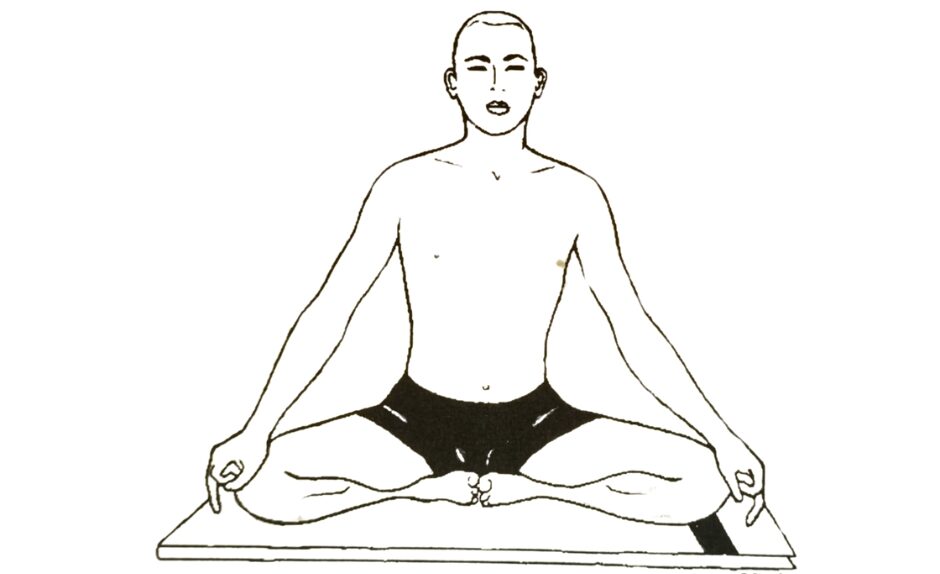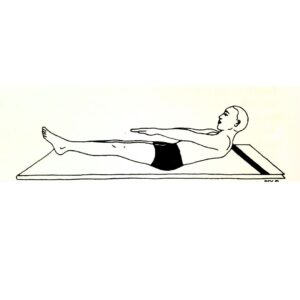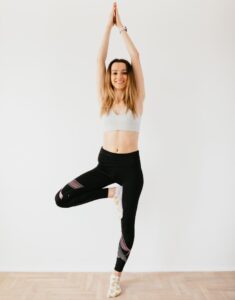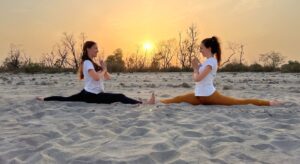Mulabandhasana is also known as Moolabandhasana is an advanced sitting posture which requires flexibility of the knees, hips ankles, legs, and feet. The name is derived from Sanskrit, mula which means “root”; bandha is a reference to “knot” also known as “lock” as well as asana, which means “knot” or “lock.” is a translation of “pose” as well as “posture.”
In a seated posture in a seated position, with the soles of the feet touching, and the knees lowered to the side and the feet pulled forward until the yoga teacher sits on the feet. In the more advanced version the posture the feet are flipped inwards so that the toes face in the direction of the yoga practitioner.
In English the term “Mulabandhasana” is referred to in English as the root lock pose as well as root chakra pose or perineal contraction pose.

Himalaya Yoga Teacher Training Explains Mulabandhasana
Moolabandhasana is among the asanas that are part of the four-part series Ashtanga yoga. It also functions as a bandha, which is an energy lock, which hinders and redirects prana energy around the body. Like the name implies, it also stimulates the root chakra, also known as the muladhara. The chakra is a source of stability, groundedness and security. It is the chakra with the lowest frequency. an enlightened muladhara provides the basis for activating the other chakras.
How to practice Mulabandhasana
- Sit with the legs outstretched in front of the body.
- Bend the knees and bring the soles of the feet together.
- Draw the heels towards the body.
- The outside of the feet should remain on the floor.
- Placing the hands behind the buttocks with the fingers pointed backwards, raise the buttocks on to the heels, so that the heels press the perineum.
- The knees remain on the floor.
- Do not strain the ankles.
- Place the hands on the knees in either chin or jnana mudra.
- Practice nasikagra drishti.
- Hold the final position for as long as is comfortable.
- Release the legs and stretch then forward.
- Repeat when all the tension has left the legs and feet
Contra-indications of Mulabandhasana
This pose should not be attempted until the knees and ankles have become very flexible
Benefits of Mulabandhasana
This asana automatically induces moola bandha and is primarily used for awakening Mooladhara chakra. Its is an important asana for the conservation of sexual energy, and tones the reproductive and eliminatory organs. It also makes the legs and Feet exceptionally supple.
Mulabandhasana improves:-
- Flexibility
- Relax the mind.
- Increase confidence
- The mind is open to the possibilities
Learn to know more about yoga poses so you can join Himalaya Yoga Teacher training‘s Courses 200 hour yoga teacher training in Rishikesh and 300 hour yoga teacher training in Rishikesh



